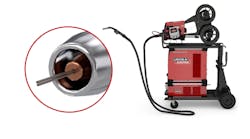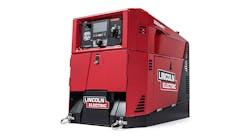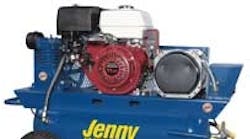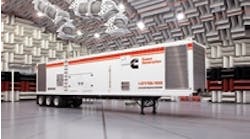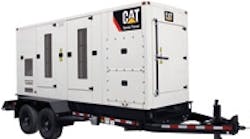Whether you are running a fleet business or operating a fleet as part of a business, never have there been so many capable tools available to manage the fleet efficiently. Today, telematics technology enables every aspect of fleet operation to be measured, recorded and analyzed to fine-tune your fleet's operational, safety and business performance.
The term “telematics” today refers primarily to vehicle-based systems that integrate GPS sensors with wireless communication and computer technologies linked to the Internet to deliver greater intelligence that enables organizations to improve a variety of fleet-oriented business operations and services.
Virtually any organization that involves fleets and/or groups of mobile workers can benefit from a vehicle telematics solution. Vehicle telematics solutions provide fleet owners and operators with extensive, real-time information and intelligence on vehicle location and performance, driver behavior and a wide range of other parameters. Using this data, you can improve driver and mobile worker productivity and safety, and evaluate and improve fleet operations to increase fleet performance, efficiency and regulatory compliance.
Essentially, a telematics device — including a GPS sensor and computing and communication capabilities — is fitted into the vehicle and wirelessly transmits data to a server to either fleet managers, branch managers, dispatchers, business owners, drivers or others, typically over the Internet. The transmitted data typically includes the vehicle's location, speed and time, but also may include work order information, driver actions and vehicle diagnostics data as determined by the telematics system. In more comprehensive solutions, it can also include data from on-vehicle, special-purpose sensors that detect any number of vehicle events and load conditions. At the office, a dispatcher or fleet manager can view the data on maps or reports in real time via a secure link to the cloud-based data center.
Selecting a telematics system and supplier
Some telematics providers supply individual components; others offer complete, end-to-end integrated systems or platforms. As more companies bring more specialized products and technology to the market, the potential for overall fleet management performance increases correspondingly.
Many fleets start with a basic fleet tracking and fleet management solution. After gaining experience in its use and realizing its benefits, they often decide to expand the system to incorporate safety or more comprehensive work management capabilities. That's why it is important that the initial solution should be capable of such expansion to protect the initial investment and training, without needing to start over.
Key elements
There are three key elements to a comprehensive telematics fleet management capability:
- Managing the Work: Fleet Tracking and Management
- Managing the Worker: Driver Safety and Productivity
- Managing the Assets: Vehicle Management and Utilization
Individual products, systems and solutions are available for each of these elements individually or to provide virtually any combination of all three. Whatever the company's current fleet management needs may be, a flexible solution can meet today's objectives and provide a growth path for the future. For example, if your company's primary concern is safety, then that should be the first element of the solution to be acquired. Other aspects can be added as your needs evolve.
Managing the work
The fleet manager or dispatcher needs a clear understanding of what is happening in the field to help optimize scheduling, routing and job performance. A fleet tracking and management solution provides real-time vehicle tracking and real-time alerts for managing productivity. The dispatcher can: see the location and status of each vehicle in the fleet or in a specific area on a map; determine the closest vehicle to a new work requirement; see when a vehicle enters and leaves a work site; and relay instructions to the driver.
A few of the capabilities and benefits that can be achieved from a comprehensive fleet tracking and management solution include:
- Schedule and optimize jobs and routes
- Manage miles driven and work performed in the field
- Increase fleet productivity using real-time location intelligence
- Increase mobile worker productivity by monitoring arrival times, distances traveled, stops made and overtime usage
- Improve mobile worker performance and productivity with communications to laptop or smart phone to view work details, provide current work status and receive work assignments without returning to office
- Improve efficiency by comparing planned vs. actual work done per day or shift
- Improve quality of service by adjusting schedules and reassigning work in jeopardy
You may also consider integrating the new capabilities with your current back-office software to increase productivity while using the software you already know.
Managing the worker: safety and productivity solutions
Virtually any fleet operation can benefit from the adoption of a driver-safety telematics solution. Aggressive and unsafe driving costs companies billions of dollars in employee injuries, lost productivity, fines, asset damage, litigation, poor fuel economy, and excessive CO2 emissions. According to the U.S. Federal Motor Carrier Safety Administration, the top contributors for fleet vehicle accidents are inadequate driver surveillance, driving too fast for the conditions, and speeding around curves and turns.
Typically, a fleet safety telematics solution will:
- Determine and record vehicle speed
- Measure and record the forces exerted on the vehicle during various driving maneuvers such as turns, starts, and stops
- Evaluate and calculate the driver's score for each maneuver, factoring in the vehicle's size and load
- Provide in-cab visual and/or audible feedback to alert the driver of unsafe maneuvers and provide a general indication of driving performance
- Report scores for individual drivers as well as a composite score for the fleet based on company-set parameters and compare individual driver scores to the average scores for the fleet
- Compute driver hours of service for payroll, compliance, and fatigue management purposes
Fleet safety solutions enable drivers and companies to proactively reduce costs, improve fleet safety and increase productivity. The data obtained can be combined with other in-depth analytics to help identify root-cause driving behaviors. Fleet safety solutions offer many benefits beyond driver safety. They also can help improve insurance rates, provide insight into fuel economy, vehicle maintenance and life expectancy, and improve business efficiency. All of these factors are closely linked to driver behavior.
Managing assets: vehicle management and utilization
A fleet of vehicles and related equipment is a major capital investment. Efficient management and utilization of each asset increases its productivity and gives fleet and maintenance managers better visibility of how often and how much each vehicle is used. Over time, asset utilization data can help you make better decisions on asset retention or replacement.
Some of the specific asset management benefits include:
- Reduce capital applied to equipment lease/purchase and operating expense
- Optimize the use and number of vehicles and equipment needed to complete work efficiently
- Increase the amount of time vehicles are in productive use
- Reduce fuel costs and carbon emissions by monitoring and correcting activities such as speeding, excessive idling and route deviation
- Automate mileage and asset use reporting
- Automate vehicle maintenance tracking and notification for the entire fleet
- Reduce unnecessary maintenance costs
- Extend vehicle life
- Maximize capabilities of capital purchases
- Ensure assets are used only for authorized purposes
- Quickly recover stolen assets
Fleet management isn't just “track and trace” anymore. Better data and more powerful and specialized analytics can provide real insight and an on-going business tool that will improve over time and help you drive the business more effectively. Many businesses have experienced an ROI on their systems within months, rather than years. The right system can make a significant improvement to your fleet operations. Whichever telematics solution is selected, remember that data on its own is of little value — how that data is actually delivered, interpreted and put to use is the key to improving fleet productivity, safety and profitability.
Joyce Tam is director of product marketing for Trimble's Field Services Group, where she is responsible for next-generation fleet solution strategies. She is an expert in GPS, telephony, networking and cloud-based service technologies, and a speaker on driver safety and fleet productivity.
